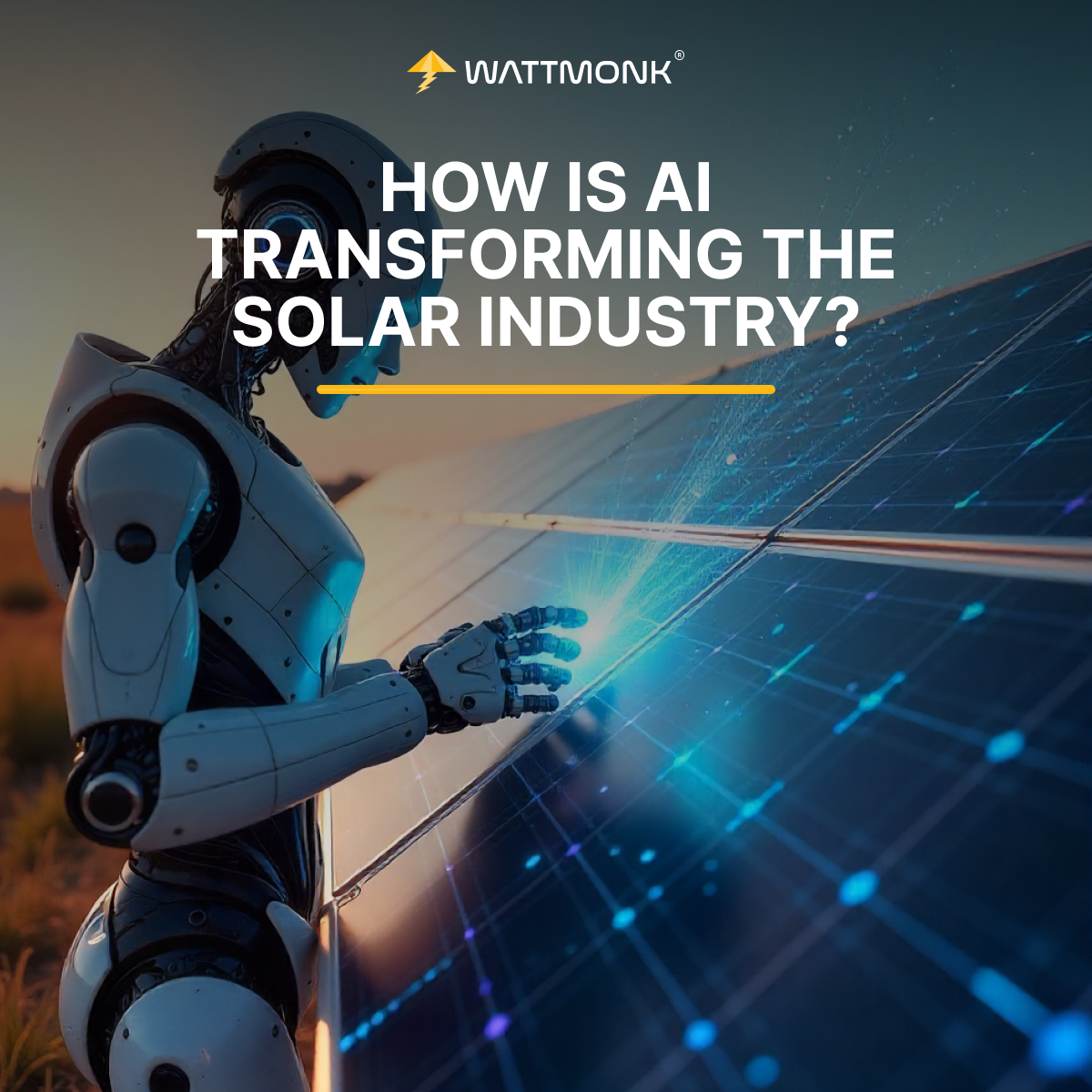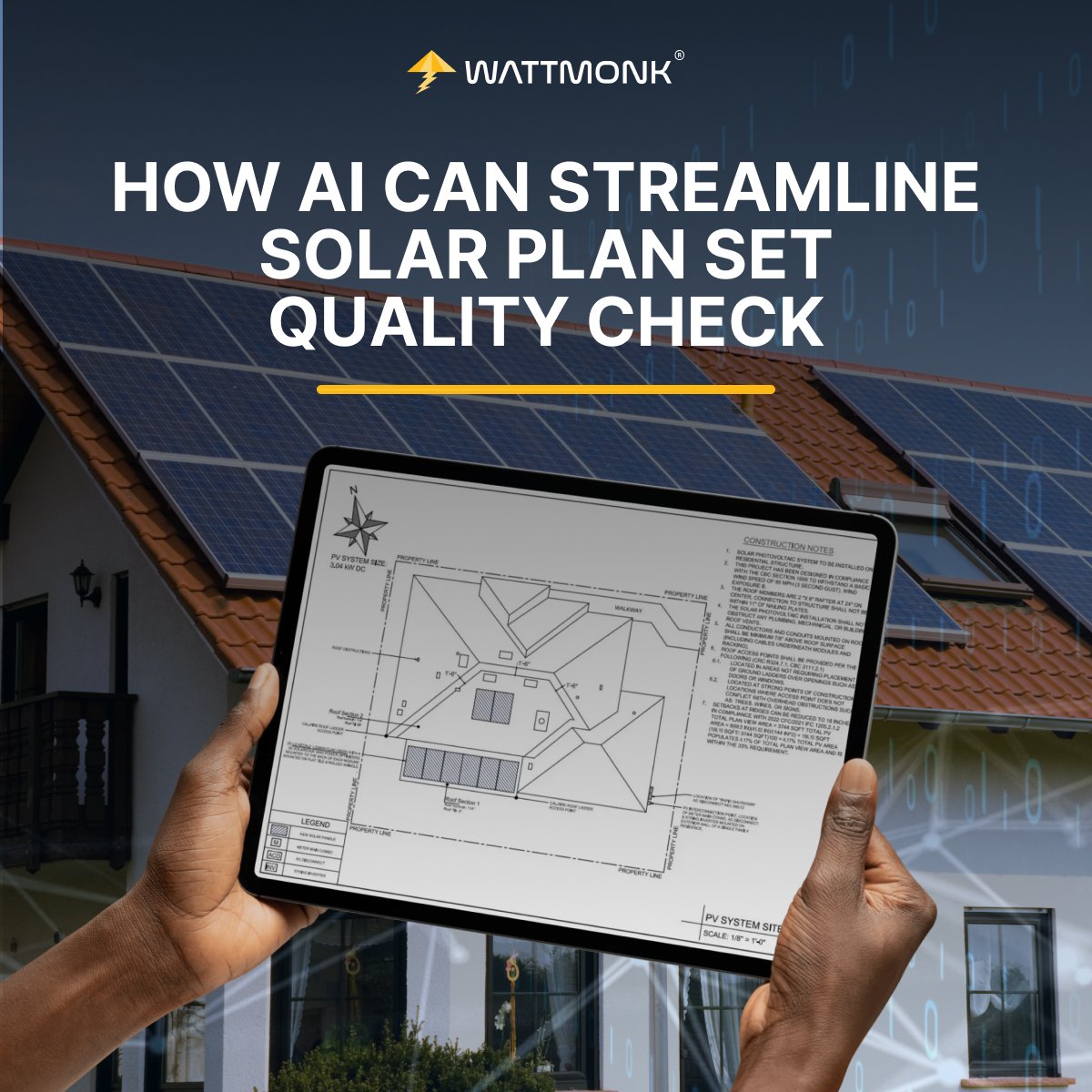The global solar energy market is projected to reach $300.3 billion by 2032, driven by increasing demand for clean power. But as solar adoption grows, so do the challenges for installers and EPCs. Studies show that up to 30% of project delays stem from inefficiencies in site assessments, permitting, design errors, and interconnection processes.
Using machine learning, computer vision, and predictive analytics, AI is helping solar businesses reduce site survey time by up to 70%, automate error-prone tasks, and forecast system performance issues before they occur.
In this article, we’ll explore how intelligent automation is revolutionizing the solar energy ecosystem with real-world examples and actionable insights you can apply today — enabling faster projects, lower costs, and smarter operations.
AI’s Role in Solar Energy Ecosystem
The solar energy ecosystem consists of multiple interconnected stages — from site assessment and system design to permitting, interconnection, and long-term performance monitoring. Traditionally, each stage involves time-consuming, manual processes that are prone to errors and inefficiencies.
Today, AI acts as an intelligent layer that ties these stages together, transforming how solar businesses operate. During site assessment, instead of relying solely on field surveys, AI analyzes satellite imagery and 3D mapping data to evaluate site viability in minutes with high accuracy. For system design, machine learning algorithms automatically generate optimized layouts by processing site characteristics, historical weather patterns, and energy usage data, reducing design time while improving system performance.
On the compliance front, AI helps streamline permitting and interconnection by automatically cross-referencing designs with local regulations, minimizing application rejections.
AI enables solar installers and EPCs to scale their operations faster, reduce costs, and focus on delivering value, rather than getting stuck in repetitive tasks.
5 Ways AI is Revolutionizing Solar Power
AI is reshaping the solar energy industry by automating complex tasks, improving decision-making, and enabling data-driven insights at every stage of a solar project’s lifecycle.
Here are a few ways where AI is already transforming the traditional processes:
1. Smarter Site Assessments
Traditionally, site assessments required field visits, manual measurements, and subjective judgment, a process that could take days per site and introduce human error as well. With AI-powered solutions using satellite imagery and computer vision, site assessments are now automated and can be completed in minutes instead of days. Algorithms analyze roof geometry, shading patterns, and structural integrity with high precision, reducing survey time by up to 70% and increasing accuracy by over 90%.
2. Automated Design & Proposal Generation
AI can streamline the design process by automatically generating optimized system layouts and performance proposals based on site data. Machine learning models factor in location-specific weather patterns, historical performance data, and grid requirements to design systems that maximize energy output while minimizing costs — all in a fraction of the time manual design takes.
3. Predictive Maintenance for Long-Term Performance
Solar panels degrade over time, and undetected faults reduce energy output and revenue. AI enables predictive maintenance by continuously monitoring system data and identifying early signs of performance degradation or equipment failure. Industry reports suggest predictive maintenance powered by AI can reduce maintenance costs by 25–30% while increasing system uptime by up to 15%.
4. Streamlined Permitting and Interconnection
Permitting and interconnection are major bottlenecks in solar project timelines, often taking weeks to months due to paperwork, manual reviews, and back-and-forth approvals. AI helps automate form filling, compliance checks, and flagging of errors before submission, accelerating permit approvals and reducing rejection rates by up to 40%.
5. Data-Driven Performance Optimization
AI tools analyze large datasets from installed solar systems to provide actionable insights on improving energy yield and system reliability over time. Adjusting parameters in real-time and recommending hardware upgrades or repositioning, AI drives continuous efficiency improvements.
Real-World Impact of AI in Solar
Several real-world examples demonstrate how intelligent automation is helping solar businesses improve efficiency, reduce costs, and speed up project delivery.
One leading solar developer reported that by integrating AI-powered site assessment tools, they cut survey times from several days to under an hour per site. This not only accelerated project pipelines but also improved first-time proposal accuracy by over 85%, reducing costly rework.
Predictive maintenance solutions powered by AI are transforming how solar systems are monitored. Instead of waiting for panels or inverters to fail, maintenance teams can proactively address issues before they cause downtime.
At Wattmonk, we’ve built a suite of proprietary AI-powered tools designed specifically for solar installers and EPCs to tackle these challenges head-on. To name a few, we have:
Watt-Pay automates engineering reviews by analyzing sales proposals and plan sets for errors, enabling installers to cut review time by up to 60%. Instead of waiting for manual checks, Watt-Pay flags design inconsistencies and compliance issues in minutes, accelerating proposal approval and improving accuracy.
Survey Co-pilot leverages satellite imagery and machine learning to deliver fast, highly accurate site assessment reports. This helps installers qualify leads and assess site viability in minutes rather than days.
PlanSet QC streamlines the quality control of plan sets by automatically checking for design errors and compliance gaps, enabling faster turnaround and reducing rework.
Why Solar Installers & EPCs Must Embrace AI Now?
For solar installers and EPCs, the choice is clear: adapt to intelligent processes now or risk falling behind for the reason mentioned below:
Speed and Scalability:
Traditional processes—manual site surveys, labor-intensive design iterations, and paper-heavy permitting—can no longer keep up with market demands. AI-powered tools like Survey Co-pilot and Permitting Agent drastically reduce time spent on assessments and permit approvals.
Cost Efficiency:
AI doesn’t just save time; it cuts costs. Tools such as PlanSet QC and Watt-Pay automate error detection in engineering reviews and plan sets, reducing costly rework by up to 30%.
Improved Accuracy and Compliance:
With permit rejection rates often exceeding 20% in traditional workflows, it becomes important for the installers to adapt to AI transition. Automating compliance checks and flagging issues before submission, AI tools reduce these rejection rates by up to 40%.
Future-Proofing Operations:
As grid interconnection standards, performance monitoring requirements, and customer expectations evolve, businesses that adopt AI today will be better equipped to handle future challenges. Predictive analytics enable installers to shift from reactive to proactive maintenance.
Closing Thoughts: Next Wave of Solar Innovation with AI
The solar industry is entering a new era — one powered by data, automation, and intelligent decision-making. AI is already driving real change, making solar projects faster, more accurate, and cost-effective. But this is just the beginning. As machine learning models grow smarter and data sources expand, we’ll see even greater innovations, such as predictive energy management, dynamic grid integration, and fully autonomous project workflows.
For solar installers and EPCs, adopting AI today isn’t just about solving current challenges — it’s about staying competitive and future-proofing their business as the energy landscape continues to evolve, and WattMonk is the one-stop solution for it.
Stay tuned for new AI roll-outs we’ve planned to keep you ahead of your competition!


